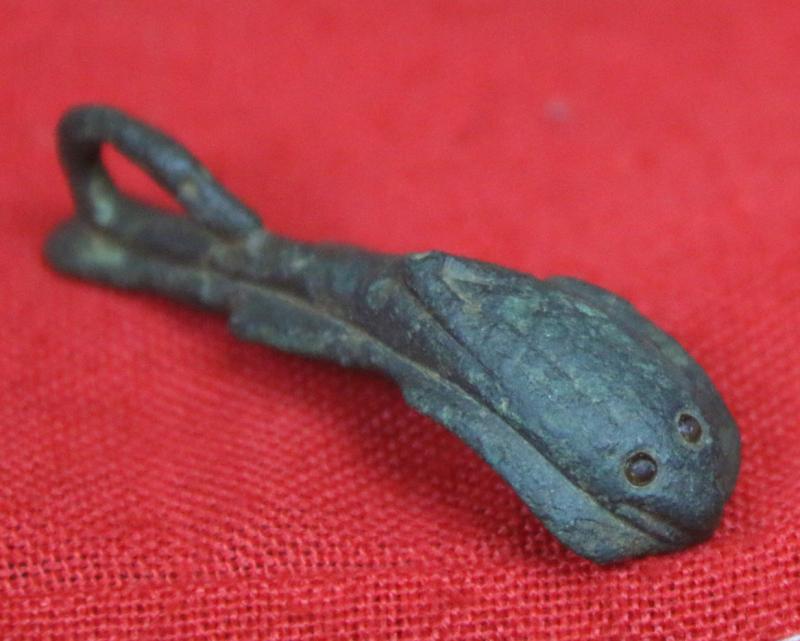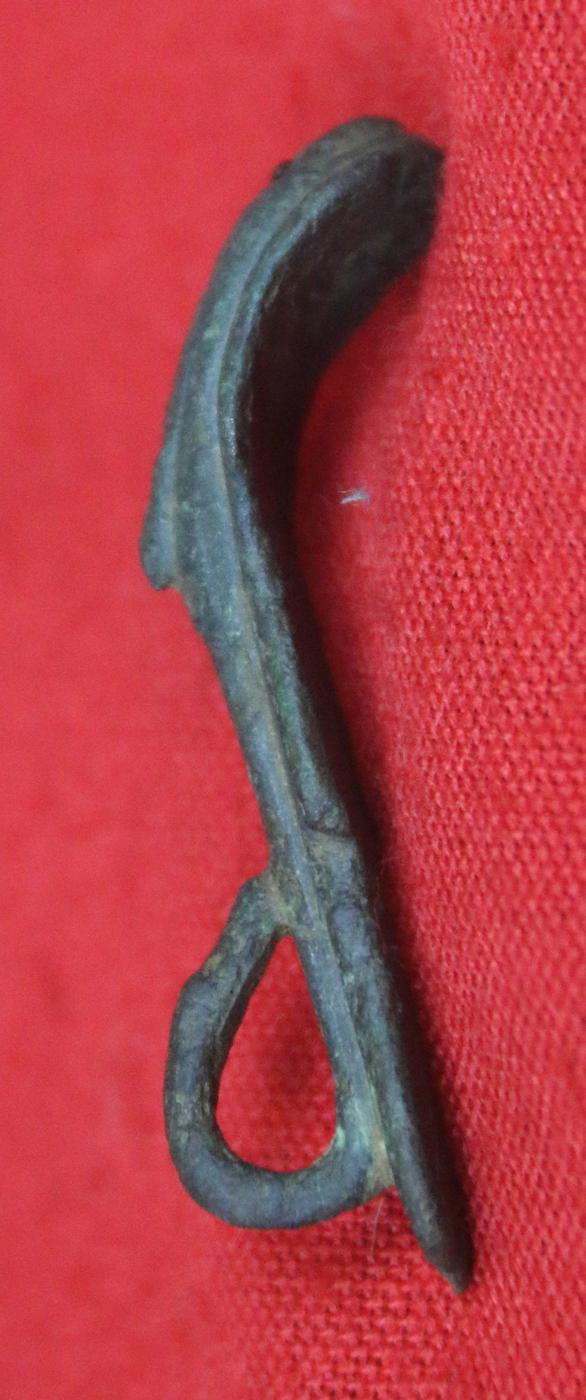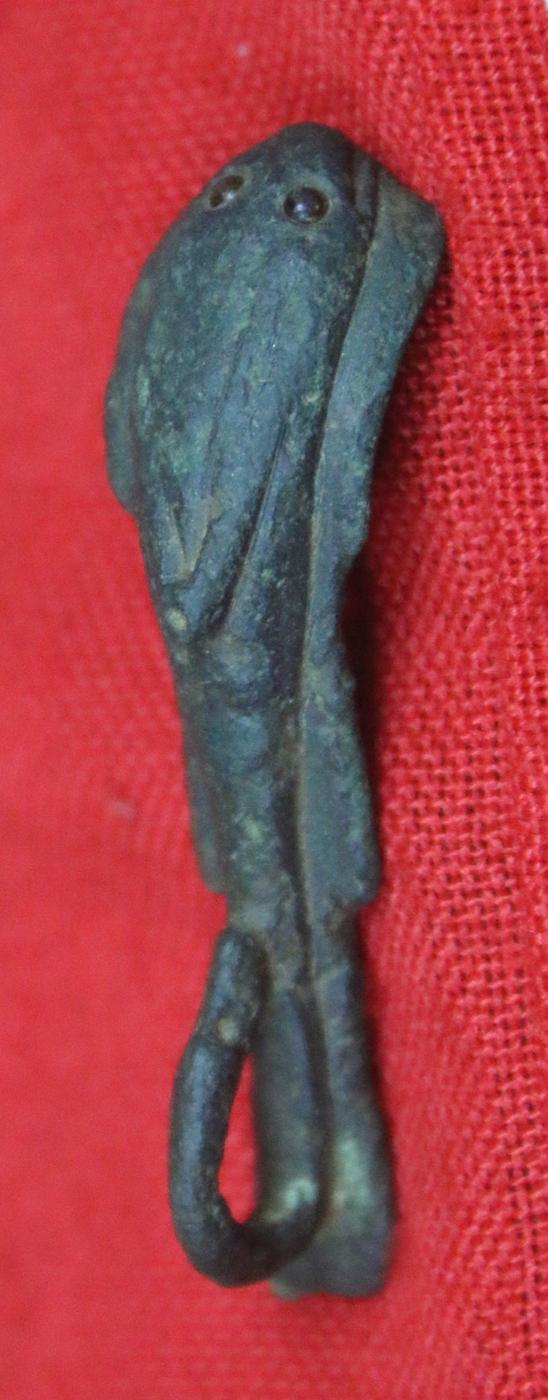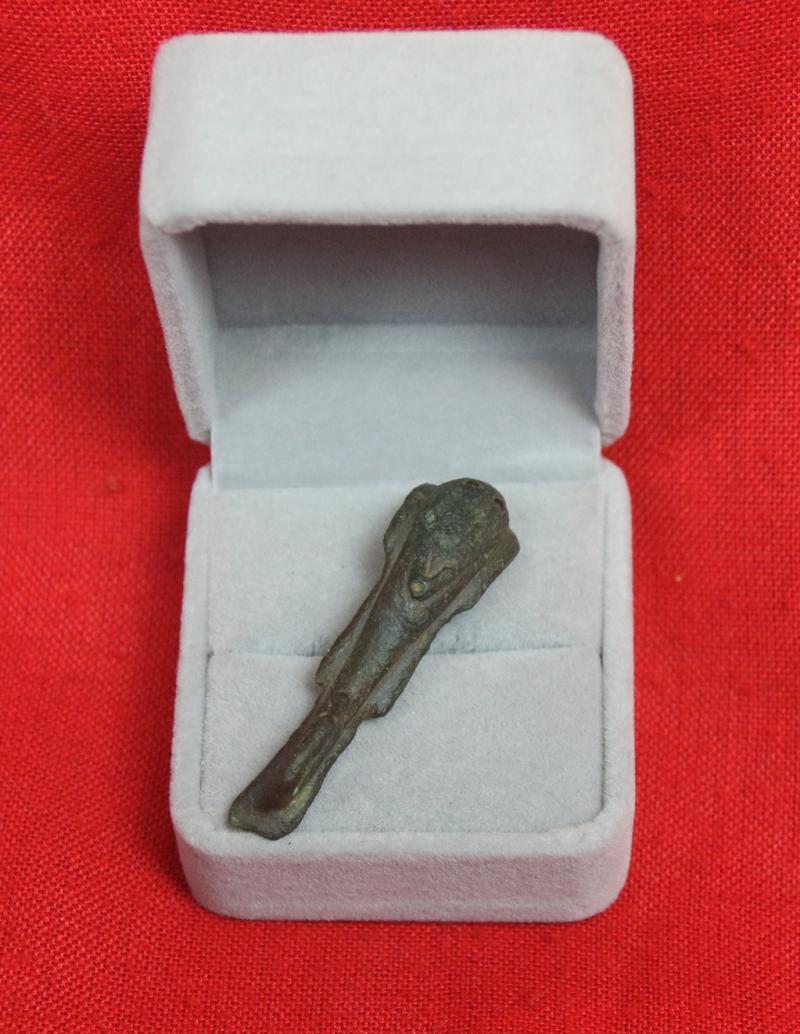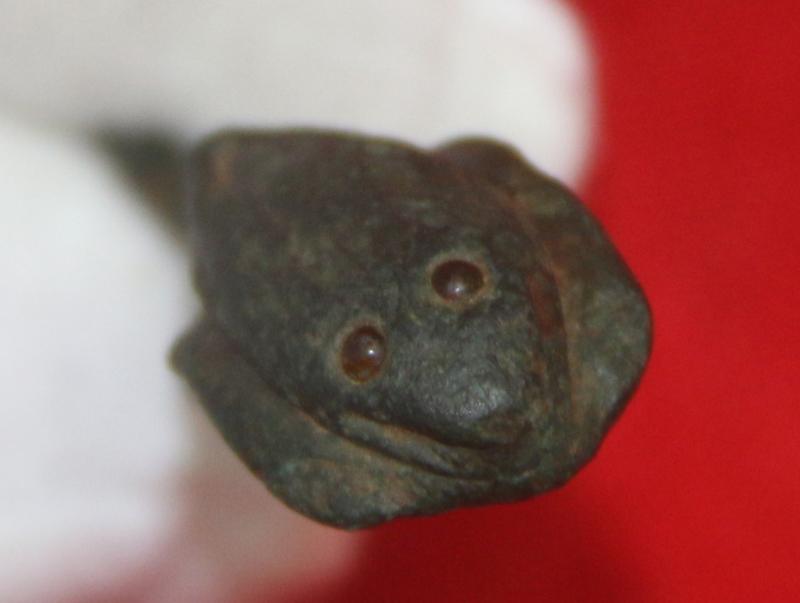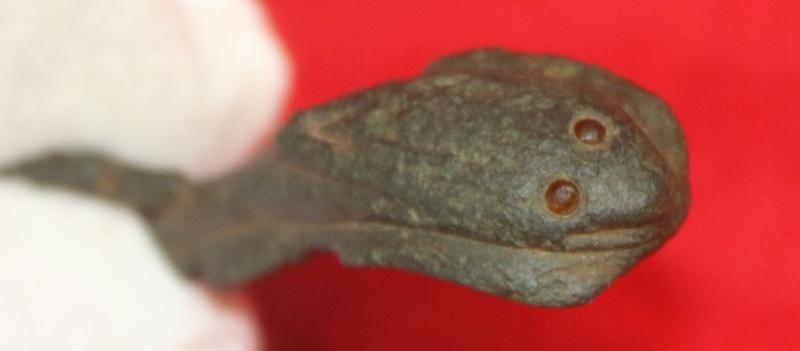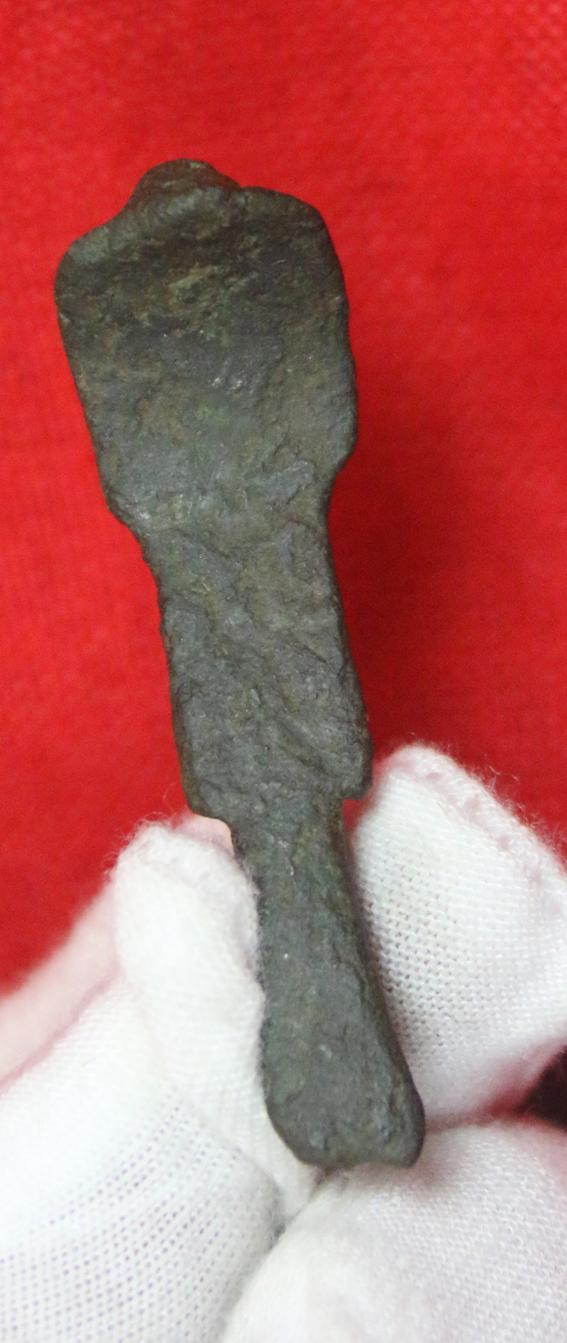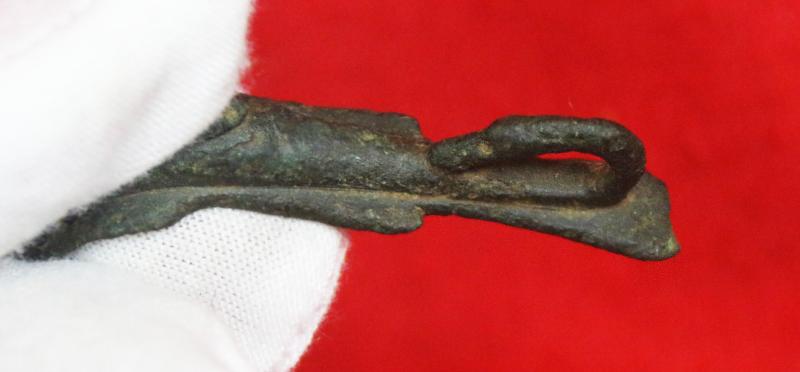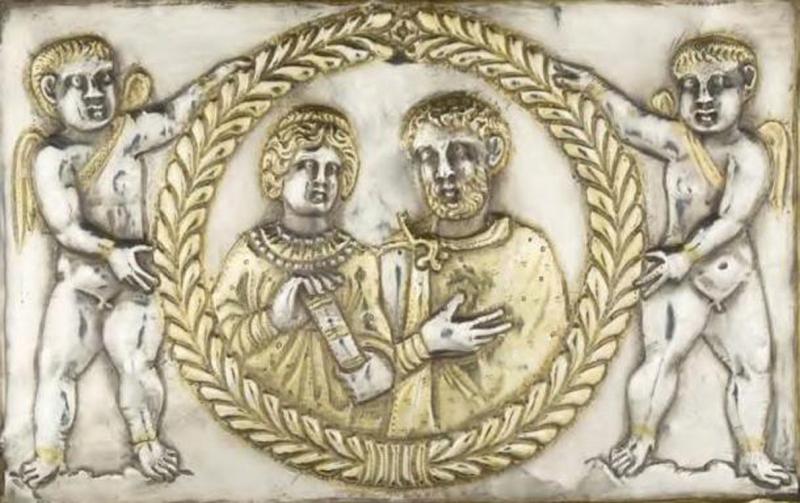Roman-British Cobra Head Brooch, With Amber Glass Eyes. Combined With A Swan's Neck and Head Loop Ist - 2nd Century AD.1900 to 2000 Years Old
Britain was part of the Roman Empire for over three and a half centuries. From the invasion under the emperor Claudius in AD 43 until rule from Rome ended in the early 5th century, the province of Britannia was part of a political union that covered most of Europe.
Roman administration in Britain lasted about 370 years – the same length of time as between now and the end of the English Civil Wars in 1651. It was a complex era of frequent change, which spanned the reigns of more than 80 emperors and saw periods of peace, prosperity and expansion, as well as times of raids, war, fear and recession.
The Romans brought many things to the lands they conquered, including towns, roads, permanent military garrisons and centralised government. In Britain this has left a rich archaeological legacy, from villas and towns to forts and the magnificent Hadrian's Wall.
During Julius Caesar’s military campaigns in Gaul between 58 and 50 BC, he mounted two expeditions to Britain. The first, in 55 BC, was simply an armed reconnaissance, but the second in 54 BC was a serious attack that subdued the major tribes in south-eastern Britain. The Romans didn’t stay, but several tribes may have become friendly ‘client states’, in some respects still independent but also subordinate to Rome.
For almost a century afterwards, tribal rulers in southern Britain maintained diplomatic relations with Rome and traded across the English Channel with its provinces. However, during the first 40 years of the 1st century AD, the Catuvellauni tribe, based to the north and east of London, gradually gained power over neighbouring tribes, the Trinovantes and the Atrebates. This gave them control of territory further south, and also forced the expulsion from Britain in AD 42 of Verica, the pro-Roman king of the Atrebates.
The Catuvellauni’s growing anti-Roman stance coincided with the emperor Claudius’s desperate need to consolidate his fragile hold on power. The usual way for emperors to shore up support was by military victory. So, the invasion of Britain was planned, with the treatment of Verica and the Atrebates as the pretext. Claudius sent an army in AD 43.
How much difference the Roman conquest made to everyday life varied from place to place. In the far West, Wales and most of the North, the army always remained at the forefront of daily life. Soldiers occupied a network of forts, connected by good roads, to police this huge area, in which Roman ways of life had far less impact than in the Midlands, South and East. In those areas, urban civilisation developed. Camulodunum was initially the province’s main town, though Londinium quickly replaced it.
There was never a massive influx of ‘Romans’. The people living in Britannia across the period of Roman rule were mostly the descendants of the pre-Roman tribes, and they lived and worked mainly in the countryside. There was a veneer of Roman officials, while the troops were originally recruited from provinces across the empire.
There would have been a gradual merging of people and culture in and around towns and forts, but in the countryside perhaps less so. The population was probably between 3 and 4 million, of which the Roman army of occupation comprised of up to 50,000 men, almost 2/3rds of the size of the British Army regulars today but 1800 years later. Which currently, strategically, would possibly, be sufficient to defend the Isle of Wight, but not much else.
Picture in the gallery of a Roman silver plaque where the male figure on the right is wearing a similar shaped robe brooch upon his right shoulder.
Code: 25583
395.00 GBP


